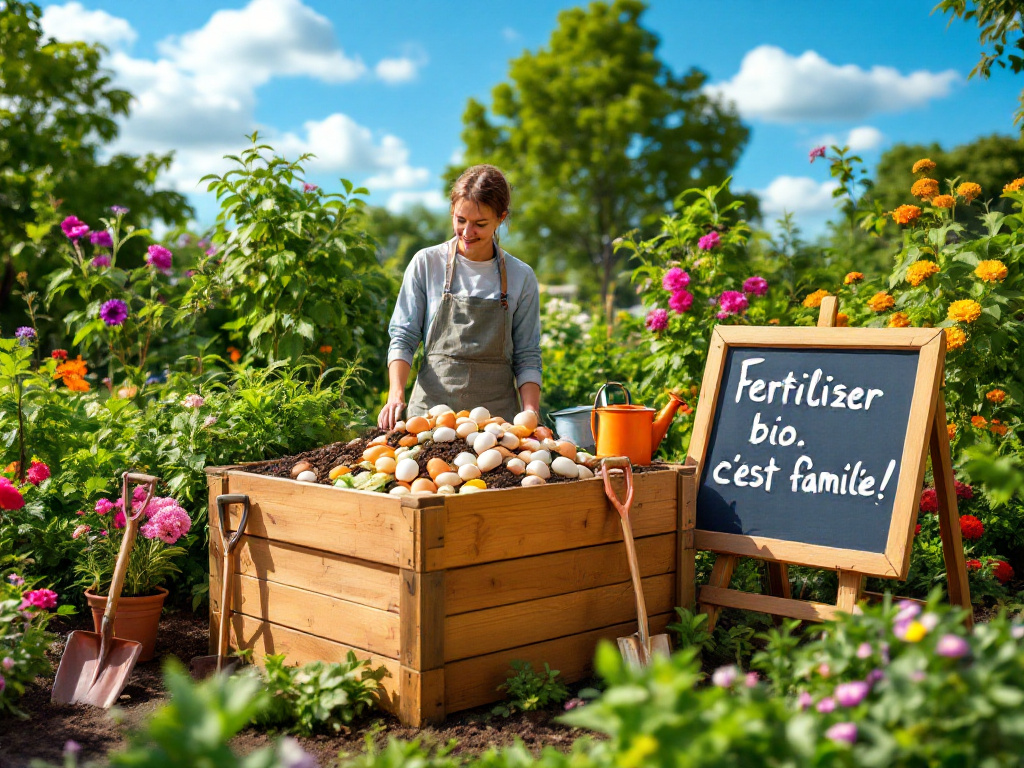
Producing homemade organic nutrients offers considerable benefits to both your garden and the environment. It’s actually quite amazing how you can transform everyday scraps into garden gold!
Unlike those chemical alternatives that leave behind unwanted residues, homemade nutrients work with nature, not against it. The beauty of it all is anyone can whip these up using leftovers from your kitchen and yard debris. Talk about budget-friendly gardening!
First time trying this precise gardening approach? Don’t worry. We’ll walk you through selecting the right ingredients to ensure your plants get exactly what they need.
Understanding Natural Plant Nutrition
Here’s the fascinating part. Homemade fertilisers follow nature’s own rhythm. When organic items like kitchen scraps, yard trimmings, and animal droppings break down, they feed helpful soil critters. These tiny workers then convert everything into nutrients your plants can easily use.
This process stands worlds apart from chemical fertilisers. The nutrients release gradually instead of washing away with the first rain. Your soil structure improves over time, and it holds moisture better too!
Essential elements—nitrogen, phosphorus, and potassium—get delivered slowly, supporting your plants’ steady growth patterns.
You can create an effective blend using common items around your home and garden.
Garden experts point out that veggie peels and fruit rinds blend perfectly with grass clippings and fallen leaves.
When necessary, natural supplements such as compost, animal manure, fish emulsion, and bone meal offer additional nutrition.
As a result, less upkeep will be required because beneficial insects and earthworms automatically manage pests.
In addition to saving you money, this gives you control over what goes into your soil, enabling you to adjust the combination to the needs of each specimen.
Required Materials
Kitchen leftovers, such as fruit rinds, vegetable scraps, and used coffee grounds offer abundant nutrients. Crushed eggshells contribute valuable calcium as well.
Your outdoor space provides additional elements like lawn clippings, fallen foliage, and pruned branches, which add carbon and structure. Collect these ingredients in a bin to create ideal conditions for decomposition.
Mix equal portions of fresh green and dried brown components to prevent unpleasant aromas and create nutrient-dense plant food.
The Composting Process
Choose an appropriate spot for your container. It’s best to go for a partially shaded area. This will provide the ideal moisture levels. It’s even better if the area has good drainage. That will prevent waterlogging and speed up decomposition.
Arrange materials by alternating green items like fruit waste and grass with brown elements, such as dried leaves and twigs. This setup promotes air circulation and eliminates odours.
Turn the contents periodically to accelerate breakdown. Keep your mixture as damp as a wrung-out sponge.
If it feels dry, add fresh greenery or spray it with water. If it is too wet, incorporate dry foliage or straw. In about 3-6 months, you will have dark, crumbly compost that smells like fresh earth.
Worm-Based Enhancement
Red worms are excellent garden helpers, transforming kitchen waste into rich, natural nutrients. To begin vermicomposting, you will need:
- A bin with air holes;
- A foundation layer made from dampened shredded cardboard or coconut fibre.
Once prepared, add your wrigglers and feed them with scraps like vegetable peelings, used tea bags, and coffee grounds. Avoid citrus peel, meat, or dairy products, as these can harm them and create unpleasant odours.
Plant Matter Fermentation
Start by collecting about 450g of nutrient-dense plants, particularly comfrey and stinging nettles. These natural superstars come packed with elements your garden craves.
Chop up the greenery and place it in a large container with water, leaving about 10 cm of space at the top. Cover the mixture with something breathable—an old pillowcase or burlap works beautifully. This allows airflow while keeping unwanted visitors out.
The brewing process takes between two to four weeks. Remember to stir the mixture every few days. You’ll notice the liquid darkening as plants break down. Expect some strong aromas during this phase—perfectly normal!
Before using your plant potion, dilute it with water, roughly one part feed to ten parts water. This crucial step prevents the concentrated mixture from damaging your plants instead of helping them.
This special brew delivers concentrated minerals like potassium while promoting vigorous growth and healthy root development. It naturally strengthens plants against diseases too.
Application Methods
Timing matters when feeding your garden friends. The most effective moments are during initial planting or at the season’s beginning, when plants need that extra nutrition boost to thrive.
For established plants, apply your homemade fertiliser around their base and water thoroughly afterwards. This helps carry those nutrients right down to the root zone where they’re needed most.
Got new seedlings? Mix the fertiliser into the soil before planting, so they benefit immediately from the nutritional goodness.
Plants aren’t all hungry for the same things. Cabbage and lettuce are nitrogen addicts. Flowers, on the other hand, thrive on a well-rounded diet—no nutrients left behind.
Start with about a cup per square meter, then adjust based on how your plants respond. Watch their development closely to ensure you’re not overfeeding or underfeeding them. This attentive approach guarantees your green friends get exactly what they need.
Storage Solutions
Proper storage maintains your homemade plant food’s effectiveness. Store solid materials in sturdy containers. Their tight-fitting lids will serve to preserve moisture and keep any insects or pests away.
Next is choosing the location. Place the containers in shady, cool spots. Thus, you will ensure their content will be good to use for about a year. Alternatively, use sealed glass or plastic bottles for liquid mixtures. This will prevent any leaks and evaporation.
Label everything clearly with contents and preparation date. Use liquid solutions within six months—watch for colour changes or unusual scents that might indicate they’ve passed their prime.
Conclusion
So there you have it! You now know not only the “why” but the “how”! Organic fertiliser is both an economical and eco-friendly way to nourish your outdoor garden. Turning waste and kitchen scraps into soil nourishment will help the ecosystem and reduce overall chemical use.
All this is what makes organic composting a prudent choice for every household. Your garden will become much more vital and you will enjoy the fruits of all your hard work even more because of it!
Good luck to you, and happy gardening!
